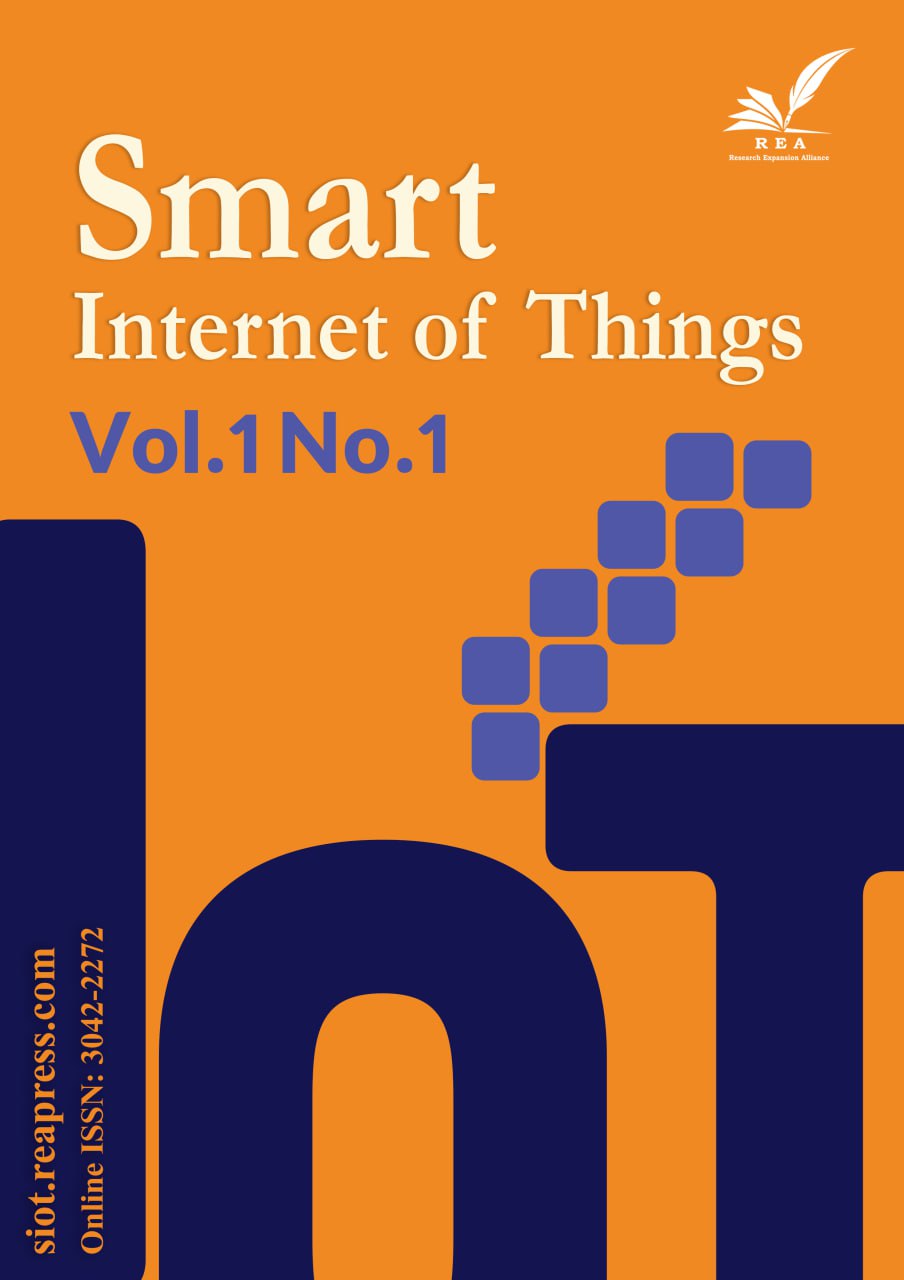Critical Analysis on Challenges and Strategies of Load balancing in Hybrid Cloud
Abstract
Cloud computing has changed how organizations handle their IT, with many now using hybrid clouds that mix private and public cloud resources. This shift has led to big changes in how IT is managed. Hybrid clouds, which blend private and public cloud resources, are now very common among businesses. In these setups, load balancing is crucial for spreading tasks across different cloud services effectively. This helps use resources better and make systems work more efficiently. This research paper explores the challenges and strategies related to load balancing in hybrid cloud environments. This paper investigates these challenges and offers strategies to overcome them, aiming to provide insights for effectively managing workloads across diverse cloud infrastructures. Here we show, how organizations continue to adopt hybrid cloud environments, therefore load balancing remains a crucial aspect of managing workloads across diverse cloud infrastructures. Understanding the challenges and intricacies involved in load balancing can aid organizations in optimizing resource utilization and enhancing overall system efficiency in their hybrid cloud deployments.
Keywords:
Hybrid Cloud, Cloud Computing, Scalability, Performance optimization, Dynamic workload, virtualization, Auto ScalingReferences
- [1] [1] Buyya, R., Broberg, J., & Goscinski, A. M. (2010). Cloud computing: principles and paradigms. John Wiley & Sons.
- [2] [2] Armbrust, M., Fox, A., Griffith, R., Joseph, A. D., Katz, R., Konwinski, A. (2010). A view of cloud computing. Communications of the acm, 53(4), 50–58. https://dl.acm.org/doi/fullHtml/10.1145/1721654.1721672
- [3] [3] Mohapatra, H., Kolhar, M., & Dalai, A. K. (2024). Efficient energy management by using sjf scheduling in wireless sensor network. International conference on advances in distributed computing and machine learning (pp. 211–221). Springer. https://link.springer.com/chapter/10.1007/978-981-97-1841-2_15
- [4] [4] Zhang, Q., Cheng, L., & Boutaba, R. (2010). Cloud computing: state-of-the-art and research challenges. Journal of internet services and applications, 1(1), 7–18. https://doi.org/10.1007/s13174-010-0007-6
- [5] [5] Balaji, K. (2021). Load balancing in cloud computing: issues and challenges. Turkish journal of computer and mathematics education (turcomat), 12(2), 3077–3084.
- [6] [6] Katyal, M., & Mishra, A. (2014). A comparative study of load balancing algorithms in cloud computing environment. ArXiv Preprint ArXiv:1403.6918.
- [7] [7] Mohapatra, H. (2021). Socio-technical challenges in the implementation of smart city. 2021 international conference on innovation and intelligence for informatics, computing, and technologies (3ICT) (pp. 57–62). IEEE. DOI: 10.1109/3ICT53449.2021.9581905
- [8] [8] Marinescu, D. C., Paya, A., Morrison, J. P., & Olariu, S. (2017). An approach for scaling cloud resource management. Cluster computing, 20, 909–924.
- [9] [9] Arunarani, A. R., Manjula, D., & Sugumaran, V. (2019). Task scheduling techniques in cloud computing: a literature survey. Future generation computer systems, 91, 407–415. https://www.sciencedirect.com/science/article/pii/S0167739X17321519
- [10] [10] Xin, Y., Xie, Z.-Q., & Yang, J. (2017). A load balance oriented cost efficient scheduling method for parallel tasks. Journal of network and computer applications, 81, 37–46. https://www.sciencedirect.com/science/article/pii/S1084804516303496
- [11] [11] Mesbahi, M., & Rahmani, A. M. (2016). Load balancing in cloud computing: a state of the art survey. International journal modern education and computer science, 8(3), 64.
- [12] [12] Mishra, S. K., Sahoo, B., & Parida, P. P. (2020). Load balancing in cloud computing: A big picture. Journal of king saud university - computer and information sciences, 32(2), 149–158. https://www.sciencedirect.com/science/article/pii/S1319157817303361
- [13] [13] Parida, B. R., Rath, A. K., Pati, B., Panigrahi, C. R., Mohapatra, H., & Buyya, R. (2024). SSEPC cloud: carbon footprint aware power efficient virtual machine placement in cloud milieu. Computer science and information systems, 18.
- [14] [14] Radha, K., Rao, B., Babu, S., Rao, K., Reddy, V., & Saikiran, P. (2014). Allocation of resources and scheduling in cloud computing with cloud migration. International journal of applied engineering research, 9(19), 5827–5837.
- [15] [15] Mishra, S., Sahoo, B., & Parida, P. (2018). Load balancing in cloud computing: a big picture. Journal of king saud university, 32. DOI:10.1016/j.jksuci.2018.01.003
- [16] [16] Gunasekhar, T., Rao, K. T., Reddy, V. K., & Rao, B. T. (2015). Mitigation of insider attacks through multi-cloud. International journal of electrical & computer engineering (2088-8708), 5(1).
- [17] [17] Mukherjee, S., & Mohapatra, H. (2024). Performance analysis of different manet routing protocols. 2024 5th international conference on innovative trends in information technology (ICITIIT) (pp. 1–6). IEEE.
- [18] [18] Parsa, S., & Entezari-Maleki, R. (2009). RASA: a new grid task scheduling algorithm. International journal of digital content technology and its applications, 3(4), 91–99.
- [19] [19] Milani, A. S., & Navimipour, N. J. (2016). Load balancing mechanisms and techniques in the cloud environments: systematic literature review and future trends. Journal of network and computer applications, 71, 86–98. https://www.sciencedirect.com/science/article/pii/S1084804516301217
- [20] [20] Javanmardi, S., Shojafar, M., Amendola, D., Cordeschi, N., Liu, H., & Abraham, A. (2014). Hybrid job scheduling algorithm for cloud computing environment. Proceedings of the fifth international conference on innovations in bio-inspired computing and applications ibica 2014 (pp. 43–52). Springer.
- [21] [21] Bhowmik, S., Biswas, S., Vishwakarma, K., & Chattoraj, S. (2016). An efficient load balancing approach in a cloud computing platform. Journal of computer engineering (IOSR-JCE), 18(6), 85–89. https://www.academia.edu/download/77764880/O1806068589.pdf
- [22] [22] Wang, S. C., Yan, K. Q., Wang, S. S., & Chen, C. W. (2011). A three-phases scheduling in a hierarchical cloud computing network. 2011 third international conference on communications and mobile computing (pp. 114–117). IEEE. DOI: 10.1109/CMC.2011.28
- [23] [23] Mizan, T., Masud, S., & Latip, R. (2012). Modified bees life algorithm for job scheduling in hybrid cloud. International journal of engineering and technology, 2(6), 974–979.
- [24] [24] Mohapatra, H., & Mishra, S. R. (2024). Unlocking insights: exploring data analytics and ai tool performance across industries. In Data analytics and machine learning: navigating the big data landscape (pp. 265–288). Singapore: Springer Nature Singapore. https://doi.org/10.1007/978-981-97-0448-4_13


